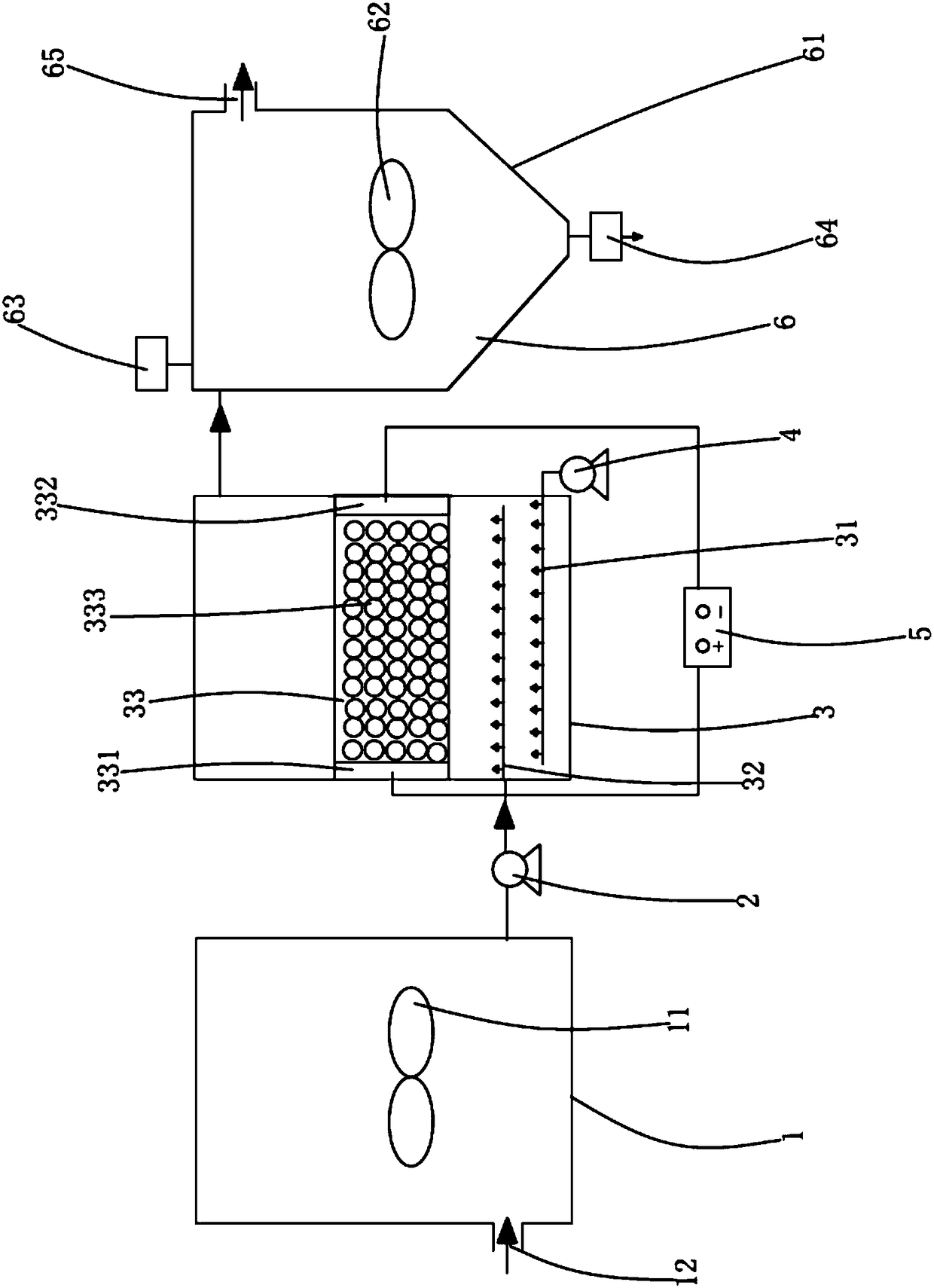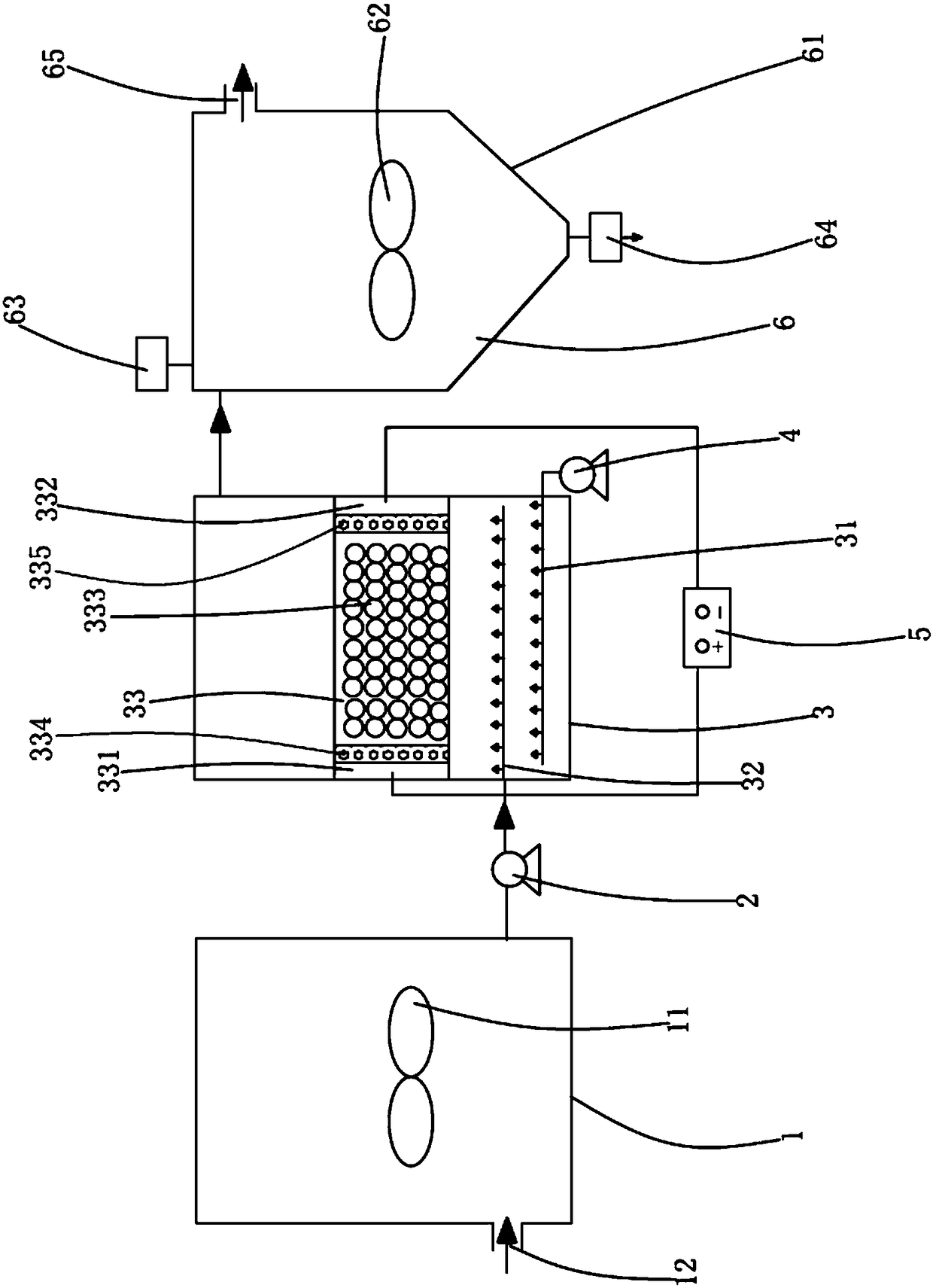Device and method for removing phosphite in waste water
A phosphite and water distribution device technology, applied in chemical instruments and methods, water pollutants, water/sewage treatment, etc., can solve problems such as complex treatment processes, and achieve the effects of simple operation, cost reduction, and loose condition control
- Summary
- Abstract
- Description
- Claims
- Application Information
AI Technical Summary
Problems solved by technology
Method used
Image
Examples
preparation example Construction
[0056] The preparation method of the catalytic filler is: mix the iron-containing material, carbon-containing material, aluminum-containing material, magnesium-containing material, copper-containing material, trace metal, binder and pore-forming agent according to the proportion, add water and stir Aging is formed to form a mixture, and then the mixture is granulated by a granulator to obtain a catalytic filler body, the catalytic filler body is dried, then roasted, and finally cooled to obtain a catalytic filler. The added mass of the water is 3%-9% of the mass of the catalytic packing, the aging time is 10min-25min, the particle diameter of the catalytic packing blank is 20-40mm, and the catalytic packing blank The shape of the body is jagged, olive-shaped or spherical, etc., the drying temperature is 100°C-120°C, the drying time is 1h-2h, and the roasting temperature is 900°C-1200°C, The roasting time is 1h-3h.
[0057] The catalytic packing prepared by this method can pro...
Embodiment 1
[0075] Mix 45% iron fine powder, 23.8% graphite, 15% aluminum powder, 8% magnesium powder, 4% bentonite, 4% hydroxypropyl methylcellulose, 0.2% copper oxide and 5ppm palladium powder according to the proportion, and add mass Continue to stir and age 5% of the mass of the catalytic filler in water for 10 minutes, then granulate the mixture through a granulator to obtain a spherical filler body with a particle size of 20mm, and dry the filler body at 100°C 2h, and finally roasted at 1000°C for 3h under the protection of nitrogen, and the catalytic filler was obtained after natural cooling.
[0076] Use this catalytic packing for three-dimensional electrolytic reaction to treat the electroless nickel plating wastewater. The total phosphorus content in the test wastewater is 3867mg / L. The adjusted wastewater in the regulating tank is introduced into the three-dimensional electrolytic reaction tank, and the three-dimensional electrolytic reaction is aerated for 6 hours. After the t...
Embodiment 2
[0078] Mix 48% iron filings, 18.5% activated carbon, 18% kaolin, 7% magnesium chloride, 5% bentonite, 3% sodium borate, 0.5% copper oxide and 7ppm manganese powder according to the proportion, and the added mass is 6% of the mass of the catalytic filler Continue to stir and age the mixture for 15 minutes, and then granulate the mixture through a granulator to obtain a spherical filler body with a particle size of 25mm. The filler body is dried at 100°C for 2 hours, and finally the filler body is dried under the protection of nitrogen. Calcined at 1010°C for 2 hours, and cooled naturally to obtain the catalytic filler.
[0079] Use this catalytic packing for three-dimensional electrolytic reaction to treat electroless nickel plating wastewater. The total phosphorus content in the test wastewater is 2280mg / L. The adjusted wastewater in the regulating tank is introduced into the three-dimensional electrolytic reaction tank, and the three-dimensional electrolytic reaction is aerate...
PUM
| Property | Measurement | Unit |
|---|---|---|
| particle diameter | aaaaa | aaaaa |
| particle diameter | aaaaa | aaaaa |
| particle diameter | aaaaa | aaaaa |
Abstract
Description
Claims
Application Information
 Login to View More
Login to View More - R&D
- Intellectual Property
- Life Sciences
- Materials
- Tech Scout
- Unparalleled Data Quality
- Higher Quality Content
- 60% Fewer Hallucinations
Browse by: Latest US Patents, China's latest patents, Technical Efficacy Thesaurus, Application Domain, Technology Topic, Popular Technical Reports.
© 2025 PatSnap. All rights reserved.Legal|Privacy policy|Modern Slavery Act Transparency Statement|Sitemap|About US| Contact US: help@patsnap.com



